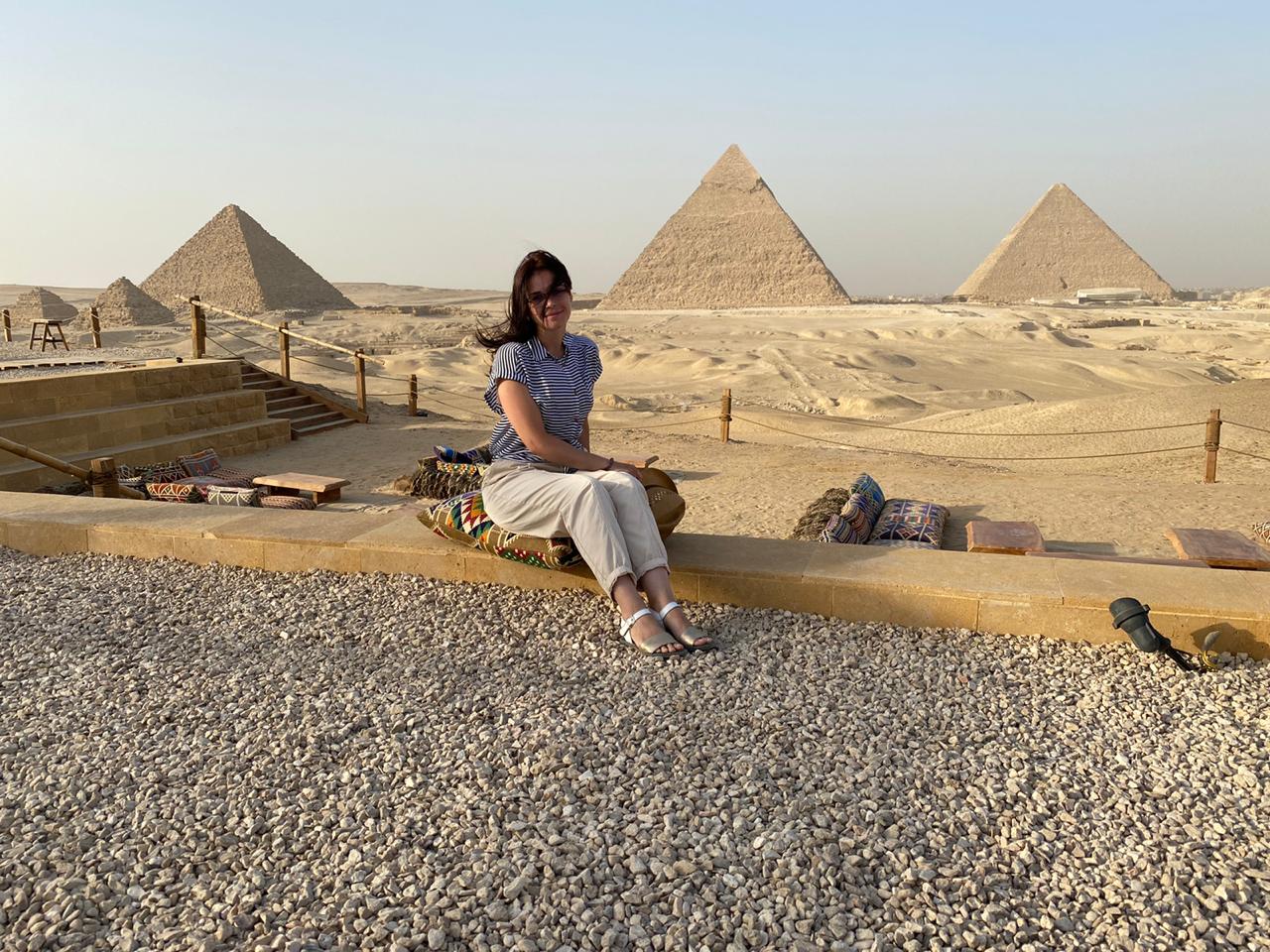Women's football is in the spotlight this year more than most, with the Women's World Cup 2011 kicking off in Germany on Sunday. As footballing athletes energetically raise the beautiful game's profile over the next three weeks, one German photographer is making her own contribution to the role of females in the sport.
Claudia Wiens is a German photographer living between Cairo and Istanbul, and for the next fortnight she will be displaying a selection of images documenting the sporting lives of various women and girls with a passion for football. The 30 photographs, which are on display at the Sawy Culture Wheel in Zamalek until 5 July, provide an insight into the enthusiam of players from Egypt, Turkey, Germany and Palestine, both at the top of the sport and lower down.
Sadly, Egypt's national women's team will not be playing in Germany this year, having been eliminated during qualifers. However, the women's sport is fast growing in popularity in Egypt, with young players willing to overcome a variety of challenges in order to improve their game, a fact that became apparent to Wiens when she started researching the subject back in 2006.
"My search took me to Wayly Youth Center in Abbasseya,” says Wiens, who laughingly explains that the girls used to practice once a week in the yard of the psychiatric hospital, while the boys made use of the club's playground.
Most girls at the club were between 12 and 27, says the photographer. "Some of them even cut their long hair to make their lives easier while playing… The veil is not an issue for the young players; most of them remove it while playing,” she says.
Despite their enthusiam, the prospects for most female footballers in Egypt seem poor. There are now 11 female teams in the first league and around eight in the second league, but life at the league level is far from luxurious. Matches are usually held on dusty and poorly-maintined pitches, such as that at Etihad al-Sayeda Zeinab.
“Most female players in Egypt don’t see the possibility of becoming professional players in the future,” says Wiens.
For those who reach the national level, life is a little better, with players on the national squad receiving payment and somewhat better facilites. The Egyptian national team was put together in the early 1990s by Sahar al-Hawary, a former football player and the daughter of international referee Ezzat al-Hawary. The team's current FIFA ranking puts it at 82 in the world, far behind the USA, Germany and Brazil, who occupy the top three spots.
Germany is clearly doing well in the current women's game. For Turkey and Palestine, which are also featured in the photo exhibition, there is along way to go, with FIFA rankings of 65 and 96 respectively.
In 2007, Wiens was assigned by a British magazine to cover the women's world cup in China, and there she met with the Palestinian football team. “In Palestine, politics and security measures play a major role in the lives of the players,” says Wiens. Players from Gaza train separately from their team members in the West Bank, and they only meet abroad for big games.
Over the past seven years, Turkey started directing its attention to forming a good women's football team, a project that found huge support from the national football federation. In collaboration with the Ministry of Education, football became part of the curriculum in more than 1000 schools in Turkey. “The players go to summer camps, train in the best facilities and are supported by a good team of coaches and psychologists,” says Wiens.
Wiens work shed's light on a small segment of each of these societies and countries.
"I like to focus on marginalized topics and show through my work the different shades of grey between black and white; I hate stereotypes,” explains the artist.




